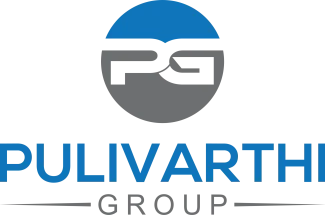Introduction
The landscape of human resources (HR) has undergone significant changes in recent years, largely due to the acceleration of artificial intelligence (AI) technologies. For HR leaders, the challenge is not merely to adopt AI but to implement it ethically and effectively. As organizations worldwide embrace AI-driven solutions, understanding the key pillars for successful implementation becomes vital.
This blog explores the five essential pillars for effectively implementing AI in HR, focusing on ethical considerations, integration strategies, and enhancing the employee experience. By adhering to these pillars, HR professionals can navigate the complexities of AI while fostering a more human-centric workplace.
1. Ethical Considerations in AI Implementation
One of the foremost challenges in AI adoption is ensuring ethical practices. Questions around data privacy, AI bias, and transparency are prevalent. For example, a study by Harvard Business Review highlighted that algorithms trained on biased data led to discriminatory hiring practices. Therefore, HR leaders must champion ethical AI by ensuring their algorithms are fair and transparent.
To address these ethical dilemmas, consider the following strategies:
- Conduct Bias Audits: Regularly evaluate AI algorithms to identify and rectify bias.
- Implement Transparency Measures: Clearly communicate how AI decisions are made to employees.
- Incorporate Diverse Teams: Ensure diversity in AI development teams to minimize inherent bias.
By prioritizing ethical AI, HR leaders can mitigate risks and foster trust within their organizations.
2. Enhancing Data Quality for Effective AI
The efficacy of AI relies heavily on the quality of data utilized during its implementation. Poor data quality can lead to inaccurate predictions and ineffective strategies. In a recent survey by Deloitte, 69% of HR executives emphasized the need for high-quality data to harness the full potential of AI in HR.
To enhance data quality, HR leaders should:
- Invest in Data Management Tools: Utilize sophisticated platforms that ensure data accuracy and integrity.
- Train Teams on Data Literacy: Equip HR professionals with the skills needed to manage and interpret data effectively.
- Foster a Culture of Data Usage: Encourage the use of data in decision-making processes at all levels.
By improving data quality, organizations can enhance their AI capabilities and, consequently, their HR outcomes.
3. Strategic Integration with HR Operations
The integration of AI into existing HR processes requires thoughtful strategy. Instead of replacing human jobs, AI should augment the capabilities of HR teams. For example, robotic process automation (RPA) can streamline repetitive tasks, allowing HR professionals to focus on more strategic initiatives.
Here are steps HR leaders can take to ensure effective integration:
- Identify Repetitive Tasks: Evaluate current HR operations to pinpoint areas that could benefit from automation.
- Pilot AI Solutions: Start with pilot programs to test AI solutions on a smaller scale before full implementation.
- Encourage Collaboration: Foster teamwork between HR and IT departments to ensure seamless integration of AI technologies.
This strategic approach will help organizations harness AI without compromising the human aspect of HR.
4. Focusing on the Human Element
AI is increasingly perceived as a way to enhance employee experience. However, many employees harbor concerns regarding automation and job security. HR leaders must prioritize the human element during AI adoption. This entails actively engaging with employees and considering their feedback.
To keep the workforce engaged, consider implementing:
- Transparent Communication: Clearly articulate the role of AI in HR practices and its benefits to employees.
- Upskilling Initiatives: Provide training programs that equip employees with skills to work alongside AI technologies.
- Feedback Mechanisms: Create channels for employees to voice their concerns and suggestions about AI implementation.
By fostering an environment that values human input, organizations can create a harmonious balance between technology and workforce engagement.
5. Continuous Learning and Adaptation
In the fast-evolving world of AI, continuous learning and adaptation are crucial. HR leaders must stay informed about the latest trends and technologies to implement effective strategies. A study by McKinsey found that organizations harnessing AI effectively demonstrate a culture of ongoing learning and innovation.
Implementing a sustainable learning framework involves:
- Regular Training Programs: Establish continuous education initiatives for HR personnel to stay current with AI developments.
- Networking Opportunities: Encourage HR leaders to engage with industry experts to share knowledge and best practices.
- Adaptation of New Insights: Make it a standard practice to adapt to new AI trends as they arise.
By committing to ongoing learning, organizations can navigate the complexities of AI and remain competitive in the HR sector.
Conclusion
AI presents a transformative opportunity for the HR industry, but its implementation requires thoughtful consideration of ethical considerations, data quality, integration strategies, human elements, and continuous learning. As HR leaders and decision-makers, embracing these five pillars will empower organizations to adopt AI technologies successfully while preserving the human-centric values essential for a thriving workplace.
Ultimately, the journey of AI implementation is ongoing; your commitment to learning and adapting will define the future landscape of HR. Explore AI implementation strategies for HR to ensure a progressive and ethical approach in your organization today.







